Have you ever been in the middle of a fitness class or online tutorial and heard the instructor say, “Engage your core”, but had no idea what they meant or how to actually engage it?
Don’t worry, we’ve all been thereLearning to activate your muscles can be confusing, but it is essential for strengthening your mind-muscle connection. When you do it properly, you will be able to recruit more muscle activity to actually feel your muscles working and ultimately see more results.
We’ll break it down for you so that you can correctly “engage your core” and build strong, stable core muscles to protect you from back pain and other health issues.
Suffering from a sore neck, back and shoulders? Get our mobility guide to ease pain and soreness.
Get The FREE Mobility Guide To Fix Your Pain Today!
The term “engage your core” typically refers to the activation or engagement of your ab muscles, but the core is actually made up of so much more than just the abs. In fact, the core is composed of all of the muscles between your hips and your ribs. Aside from your abs, the major core muscles include your pelvic floor, diaphragm, and spinal muscles.
Core Muscles
First, we’ll start with which muscles are actually used and contracted when you “engage your core”, why these muscles are so important, and what they feel like when engaged. Then we will go over five exercises that are crucial for learning how to engage your core.
Abdominal Muscles
- Rectus Abdominis – Also known as “the six-pack”, this sheet of muscle is used to flex the torso and stabilize the pelvis. You’ll feel this muscle working in exercises like sit-ups or leg raises.
- External and Internal Obliques – These are the muscles that run along the sides of your abs that work to rotate the torso and bend sideways. You’ll feel these muscles work during twisting movements and exercises, like side planks and bicycles.
- Transverse Abdominis (TVA) – This is the deepest abdominal muscle, and it works with the pelvic floor to stabilize the lower back and pelvis. You’ll feel these deep muscles working during exercises like plank or bridge.
Pelvic Floor
These muscles support the pelvic organs, and give us control over the bladder and bowel. Engagement of the pelvic floor can be felt like a squeeze or lifting up, like when you stop a stream of urine.
Diaphragm
This muscle sits at the bottom of the ribs, separating the chest cavity from the abdominal cavity. Since the diaphragm does most of the work during breathing, conscious breathing exercises can bring awareness to the diaphragm and strengthen our ability to breathe properly.
Erector Spinae
This group of muscles runs up and down both sides of the spine and assist with spinal flexion and extension, allowing your spine to bend forward and backward. You’ll feel these muscles working while practicing exercises like superman or bird dog.
How to Engage Your Core
Now that you know all the muscles that make up your core, you can better practice core engagement. Start by taking slow, deep breaths to strengthen your diaphragm by inhaling through your nose and exhaling through your mouth. At the end of each exhale, focus on squeezing or “tightening” your abs muscles. You’ll begin to notice that all of your core muscles work together to create a strong, stable environment for your spine and organs.
Things to Remember:
- Focus on the specific muscle(s) that you are working as you practice each exercise to strengthen the mind-body connection. After a few reps, you should feel the muscle working. It may feel like a burning sensation. That means you’re doing it right!
- For every exercise, focus on drawing the lowest part of your stomach up and in towards your spine. Squeeze your abs to tighten up the muscles.
- Don’t forget to breathe! Intentional breathing will help you get more out of each exercise. Take a full inhale through your nose, then at the end of each exhale, draw your pelvic floor and navel up and inwards.
Exercises That Engage Your Core
Here are easy exercises that can help you engage your core. While practicing these exercises, remember to focus on the muscles mentioned above, and practice slow, deep breathing. All you need is an exercise mat and a comfortable place to practice.
Bird Dog | 5 reps per side
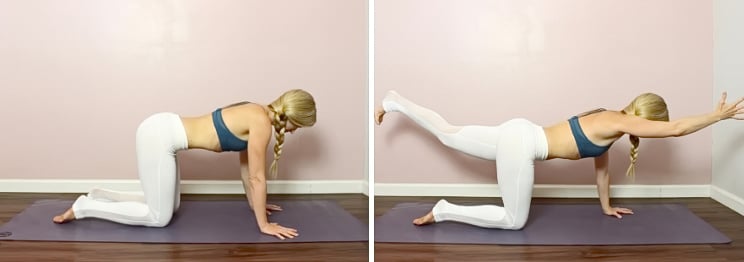
Start with this gentle core exercise to help you connect with your breath.
- Begin in a tabletop position on your hands and knees. Stack your shoulders above your wrists and your hips above your knees. Draw your navel up and in towards your spine to feel your TVA (those deep core muscles) activate.
- On an inhale, reach your right arm straight out in front of you, turn the palm inward. At the same time, pick up your left leg and reach it straight back behind you. Flex the toes towards the ground.
- Pause to feel your lower back, deep ab muscles, and glutes working to keep you stabilized. Tighten your abs and lift up through your pelvic floor.
- Exhale to release your palm and knee back down. Switch sides, then repeat for a total of 5 reps per side.
Forearm Plank | 30-60 secs
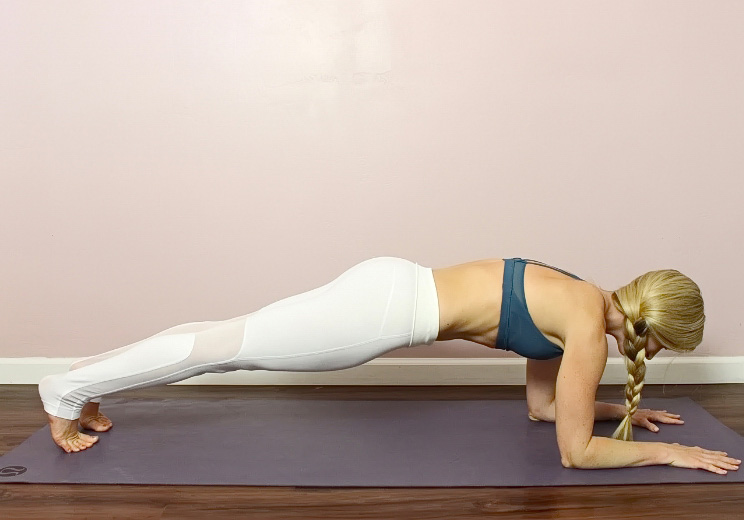
This exercise is simple, yet very effective for teaching you what it feels like to engage your core. Focus on your TVA, rectus abdominis, and your pelvic floor during this exercise, and remember to breathe deeply to strengthen the diaphragm.
- Kneel on the mat and place your forearms and palms down, bringing them parallel.
- Step your feet back one at a time, lifting your knees off the mat, and coming into a plank position with your hips in line with your shoulders. Press down firmly through your forearms and focus on your deep ab muscles and pelvic floor.
- Hold for 30-60 seconds, focusing on your breath. With each exhale, squeeze up through your pelvic floor and draw your navel up and in towards your spine and “squeeze” your abs inward.
Tip: If you feel any straining in your lower back, rest your knees on the ground for a modified plank variation.
Trunk Rotation | 5 reps per side
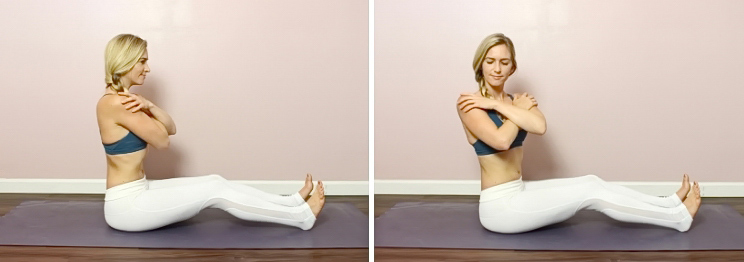
Rotating in this exercise will work your obliques while helping to improve your mind-body connection with your other core muscles.
- Sit on the mat with your legs straight out in front of you, knees slightly bent. Cross your arms in front of your chest. Draw your navel up and in towards your spine to engage your TVA.
- Keep your hips down and exhale to use your obliques and erector spinae to twist your torso 45 degrees to the right. As you exhale, squeeze your abs and pelvic floor. Hold for 5 seconds.
- Inhale to come back to center, then switch direction. Repeat for 5 reps per side.
Bridge | 30-60 secs

This simple, isometric exercise will activate the TVA, erector spinae, and pelvic floor.
- Lie on your back with your knees bent and your feet on the floor hip-width distance apart. Reach your arms down alongside your body with your palms face down. Tuck your pelvis slightly and draw your navel up and in towards your spine to shorten the distance between your pubic bone and navel.
- Inhale to lift your hips up towards the sky. Continue tucking the pelvis and drawing the navel in. Squeeze your glutes.
- Hold for 30-60 seconds, breathing deeply the entire time.
Squats | 10 reps

This exercise trains the TVA, pelvic floor, erector spinae, obliques, diaphragm, and glutes to work together, providing total stability for the spine.
- Begin standing with your feet hip-width distance apart. Turn your toes outward to 45-degree angles. Clasp your hands together in front of your chest and slightly tilt your tailbone down. Draw your navel up and in towards your spine to feel your TVA activate.
- Inhale as you bend your knees and sit your hips back and down, coming into a squat. Keep your chest lifted with your shoulder blades back so that your spine is straight.
- Exhale to press through your heels and stand all the way back up. Squeeze your glutes together and lift your navel and TVA up and in at the top.
- Repeat for 10 reps.
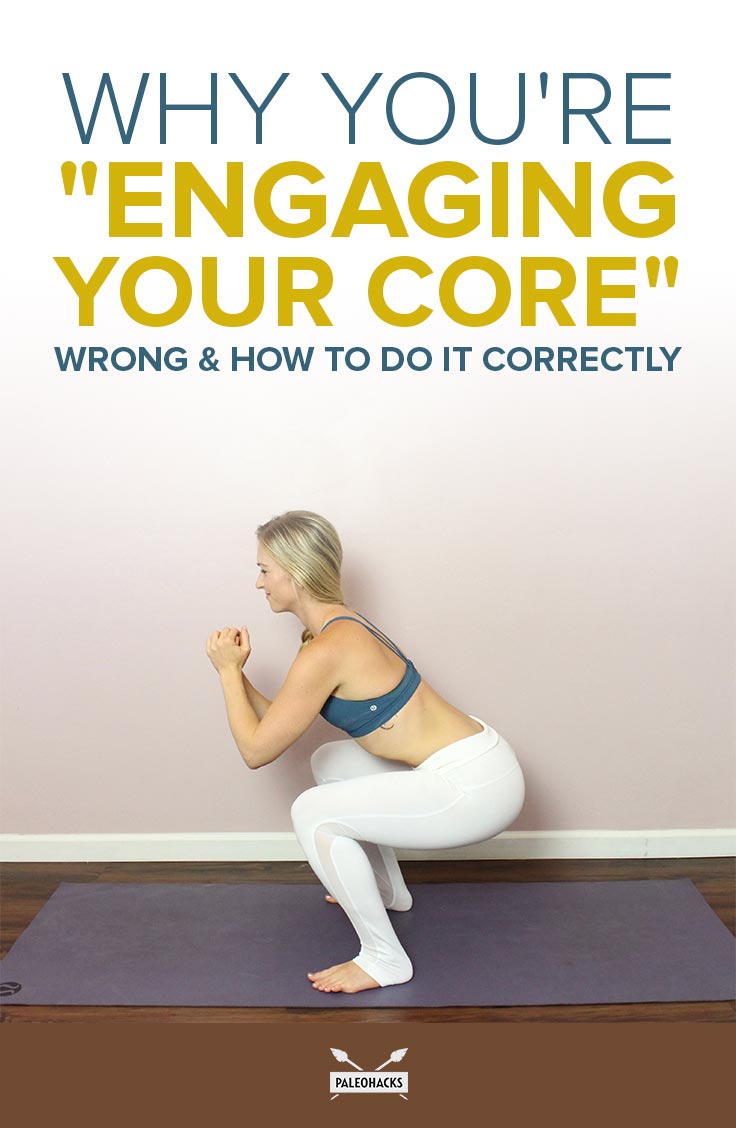
(Your Next Workout: 5-Minute Power Ab Workout with Zero Crunches)


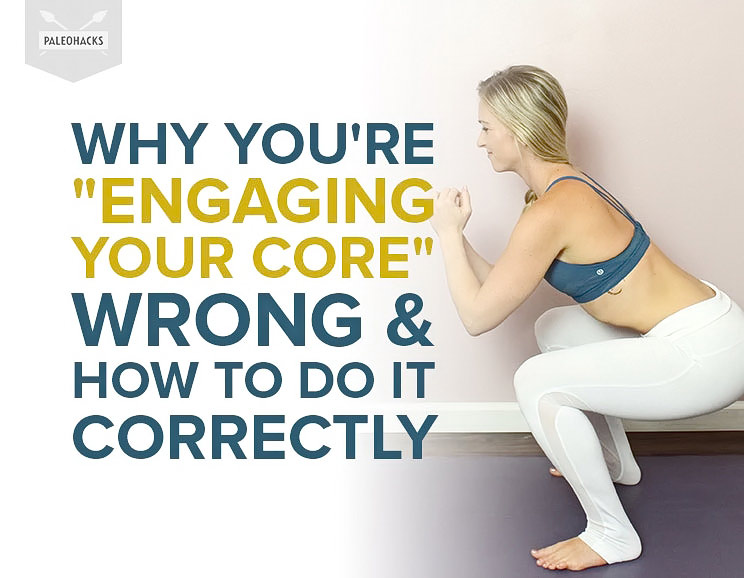
 The 6 Best Supplements for Bone Health That Aren’t Calcium
The 6 Best Supplements for Bone Health That Aren’t Calcium
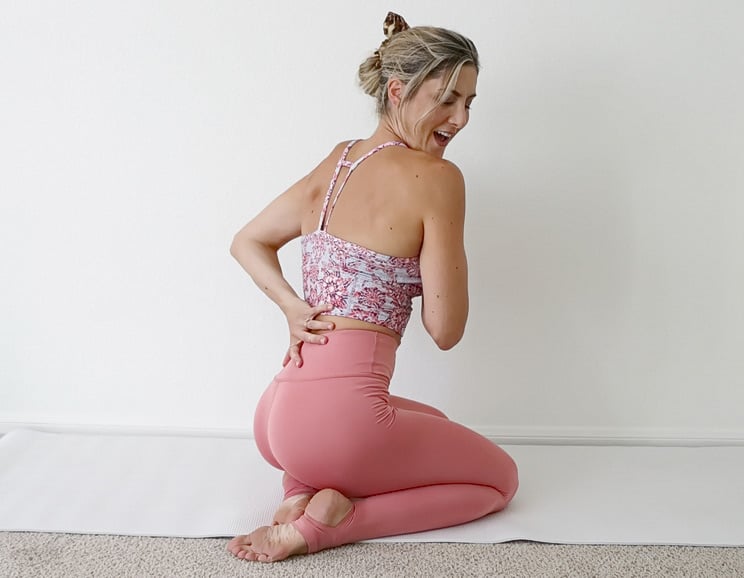
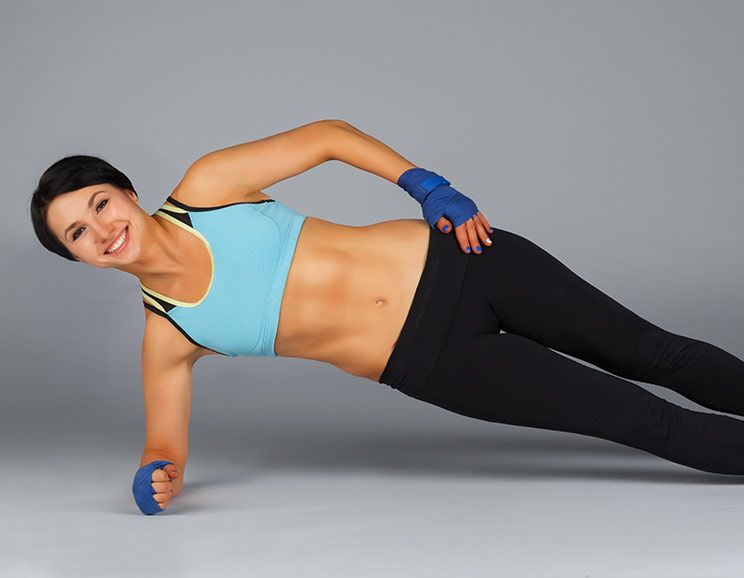
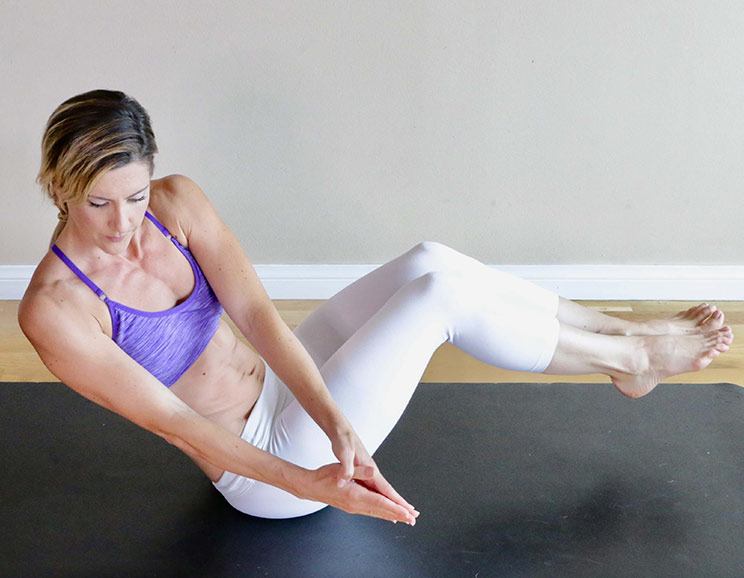
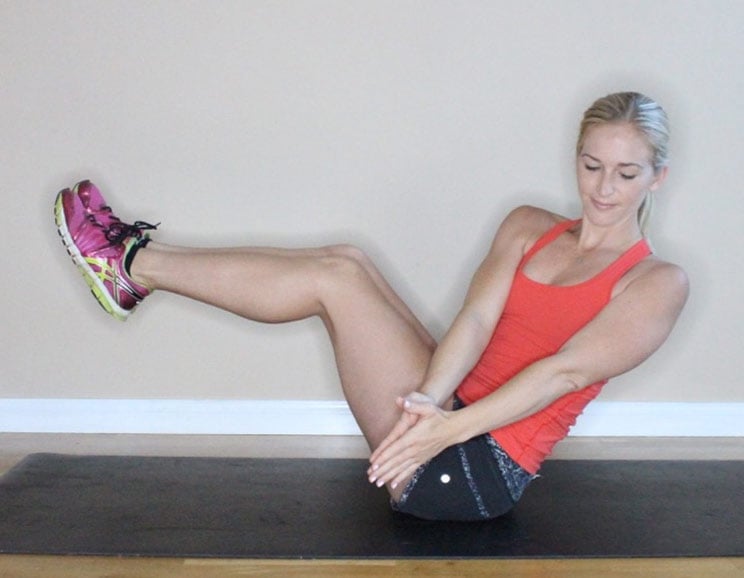
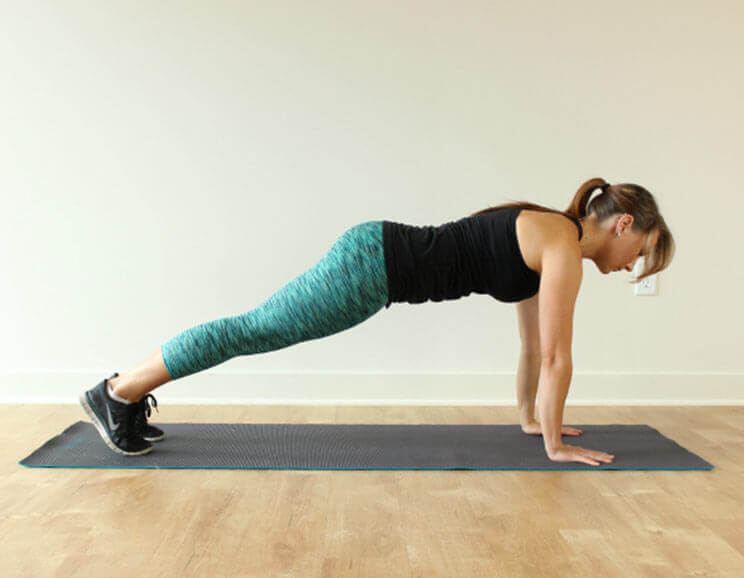
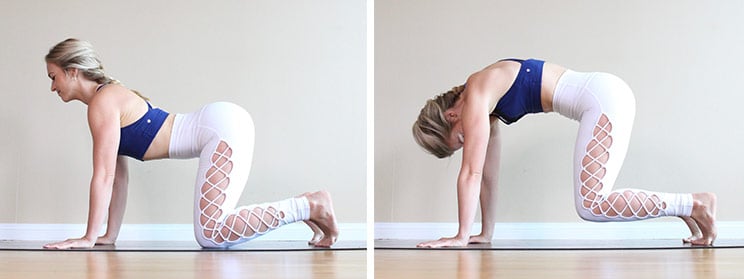
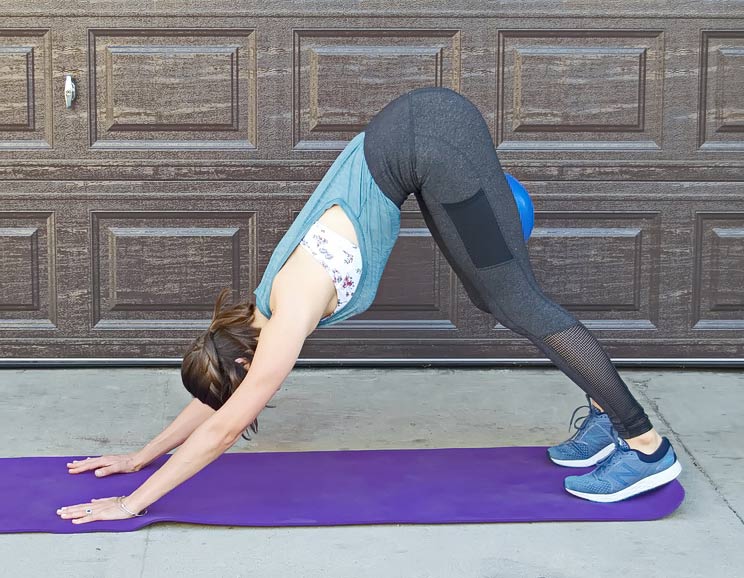


Show Comments